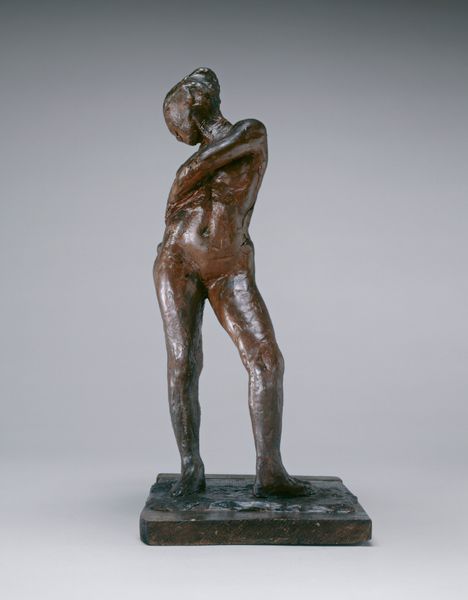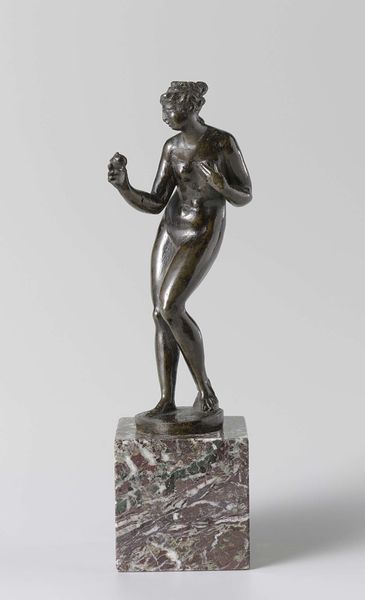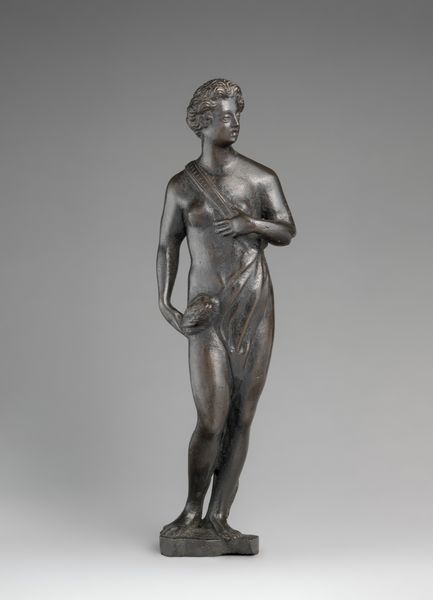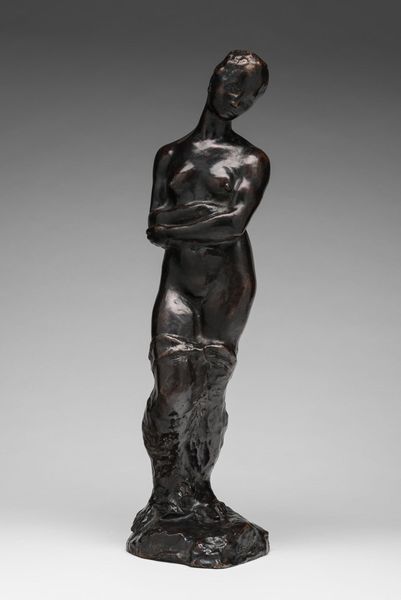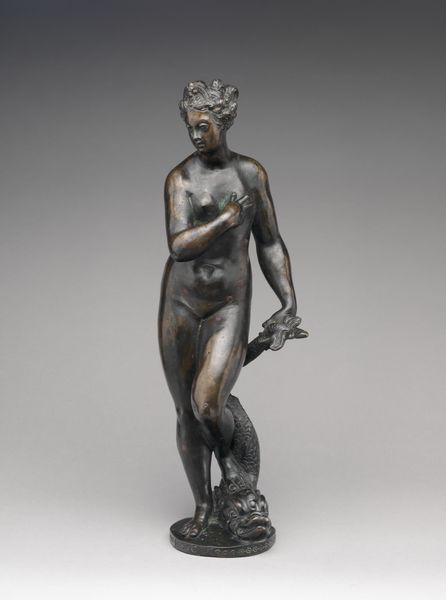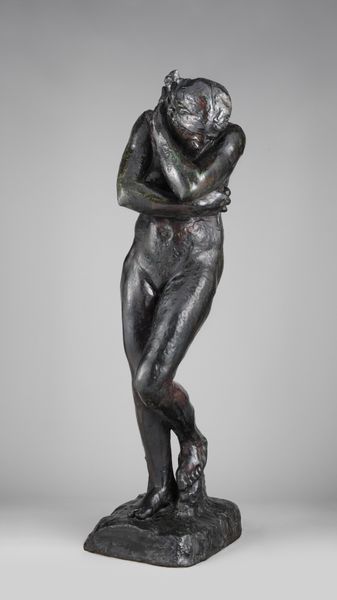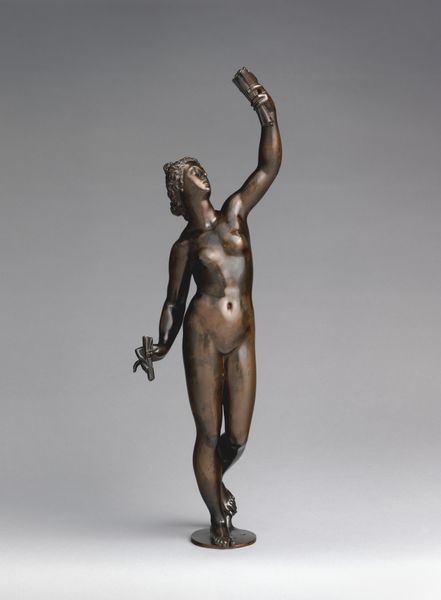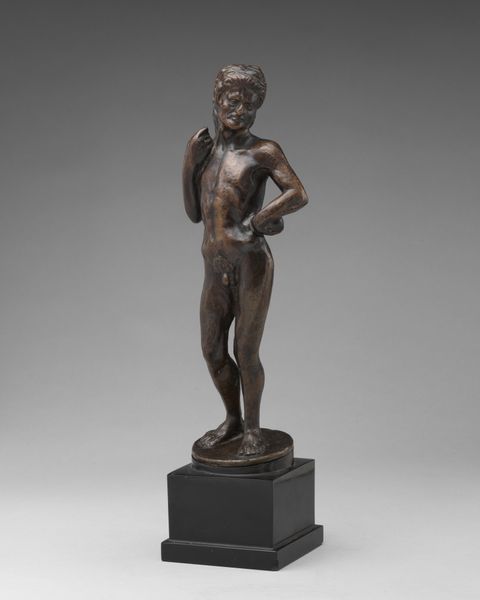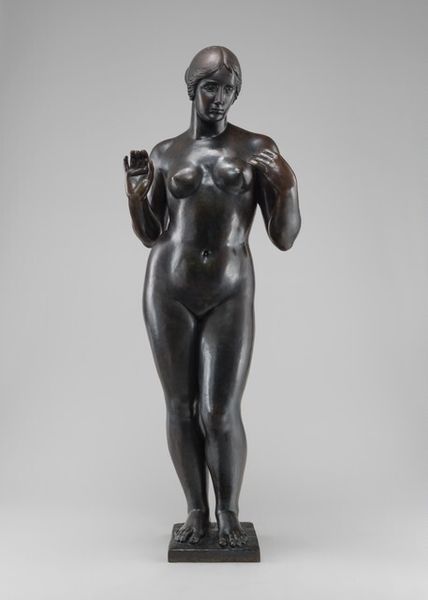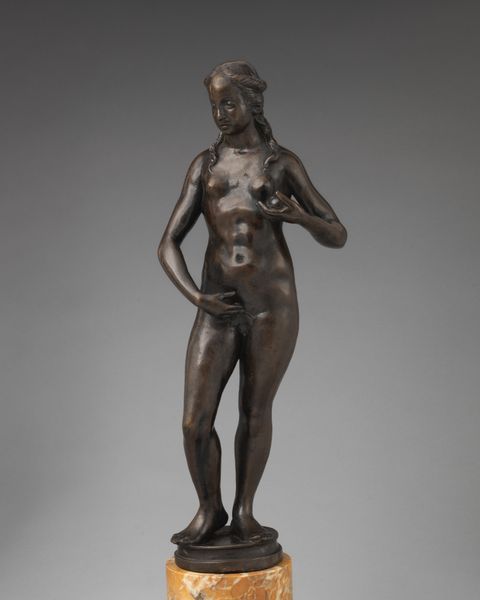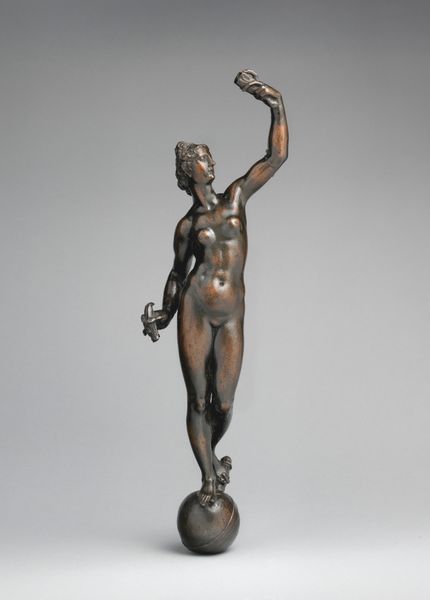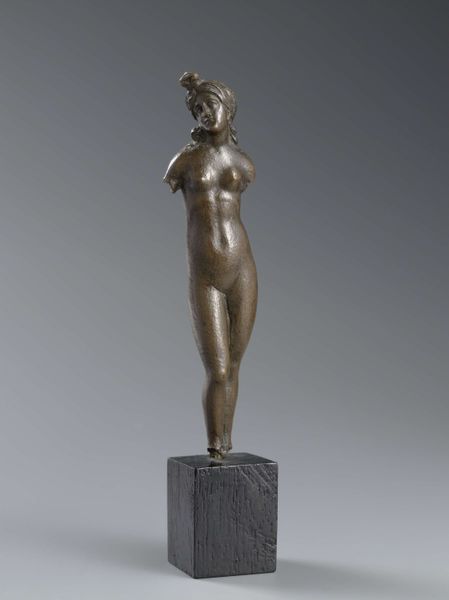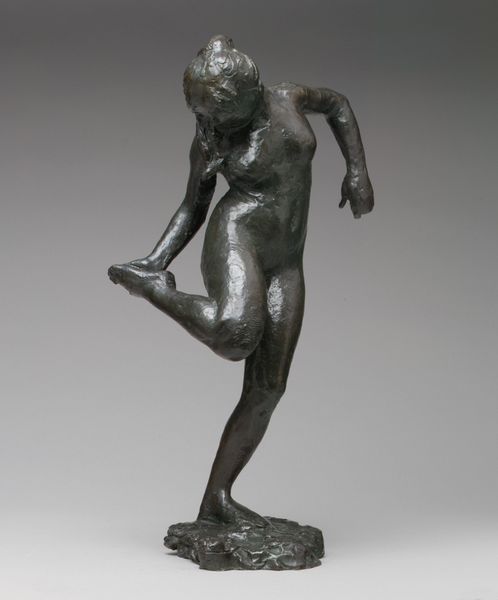
bronze, sculpture
#
portrait
#
statue
#
sculpture
#
classical-realism
#
bronze
#
figuration
#
sculpture
#
italian-renaissance
#
nude
#
statue
Dimensions: H. 17.8 cm (7 in.)
Copyright: Public Domain
Curator: Standing before us is a small bronze sculpture tentatively titled "Lucretia (?)", crafted by Pierino da Vinci between 1547 and 1548. Editor: There's an undeniable sense of modesty here. She's standing in this classical contrapposto pose, yet her hands are positioned as though attempting to shield herself. Curator: Indeed, the figure’s modesty plays interestingly against the tradition of the nude in Renaissance sculpture. Da Vinci, nephew of Leonardo, likely understood this tension intimately. What’s fascinating is to consider the context: bronze casting was a complex, multi-staged process. It required skilled labor and substantial material resources. Editor: The patina on the bronze itself draws my eye. Notice the shifts in color, how the light catches on the figure’s shoulders and thighs versus the darker areas in the recesses. This intentional play enhances the sense of three-dimensionality. Semiotically, the sculpture signals an adherence to idealized beauty, proportion, and form valued during the Renaissance. Curator: Precisely! Think about the societal role sculpture occupied at the time. A piece like this might have adorned the home of a wealthy patron, showcasing their cultural sophistication and, of course, their financial capacity to afford luxury goods, or their ability to use the body to create stories of bravery as moral exempla. Editor: What do you make of her gaze? It’s averted, almost mournful. I sense a psychological depth beyond mere physical representation. Her downcast gaze internalizes the tragic potential suggested in her modesty. Curator: One interpretation views Lucretia's self-effacement as defiance to male dominance rather than modesty, or perhaps defiance to commodification. Whether for private enjoyment, or as a vehicle for projecting status, Pierino's Lucretia reflects social expectations around female virtue and nobility in the Renaissance. Editor: It’s tempting to interpret her internal struggle in purely philosophical terms—a meditation on the precarious nature of virtue in a world of desire. But knowing this, I think her eyes truly speak for what has occurred. Curator: The sculpture then is a meeting point, a material object reflecting power relations and individual narratives of moral virtue and female form in sixteenth century Florence. Thank you for considering those viewpoints alongside me. Editor: Yes, thank you for that journey beyond the art object. It helps contextualize form, line and perspective and opens new lines of inquiry.
Comments
No comments
Be the first to comment and join the conversation on the ultimate creative platform.
